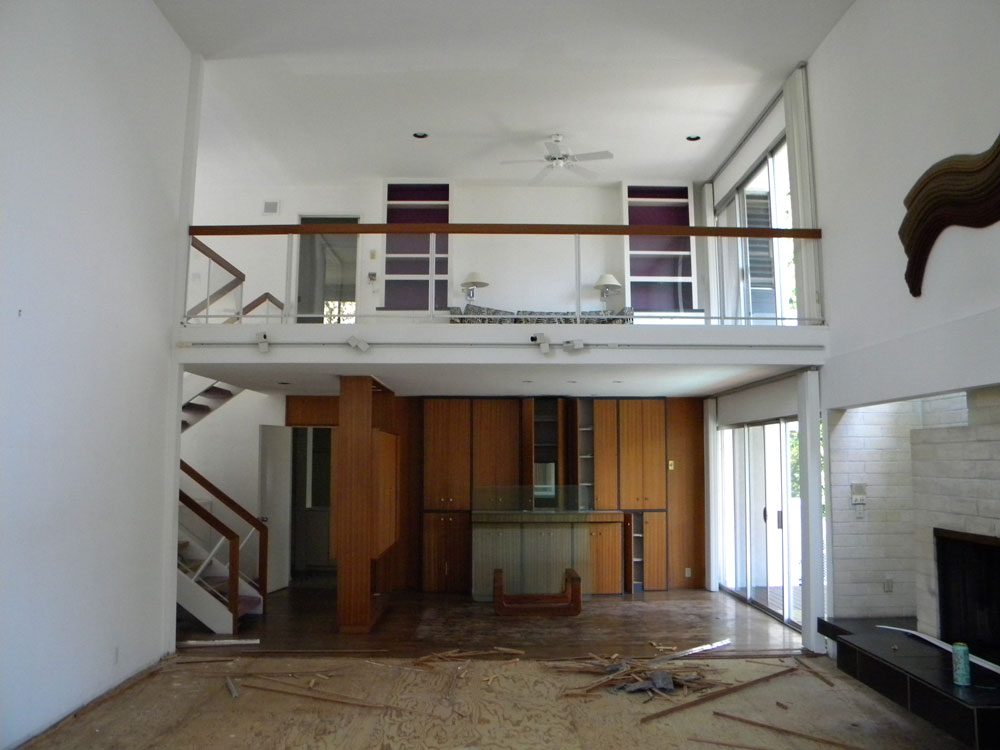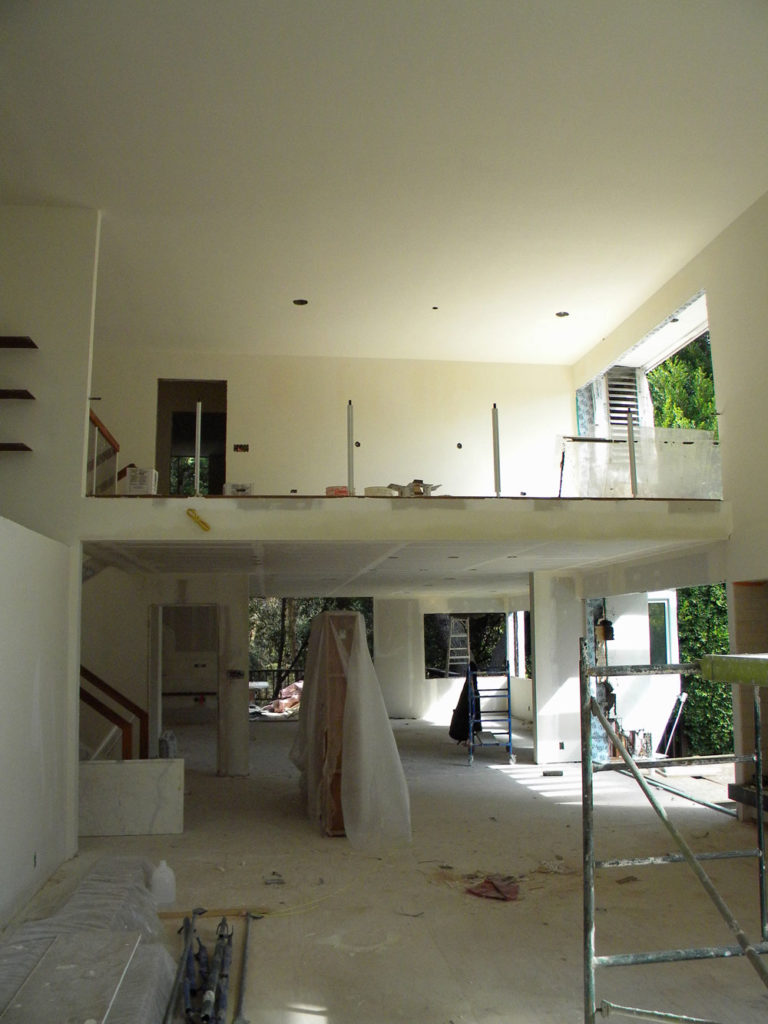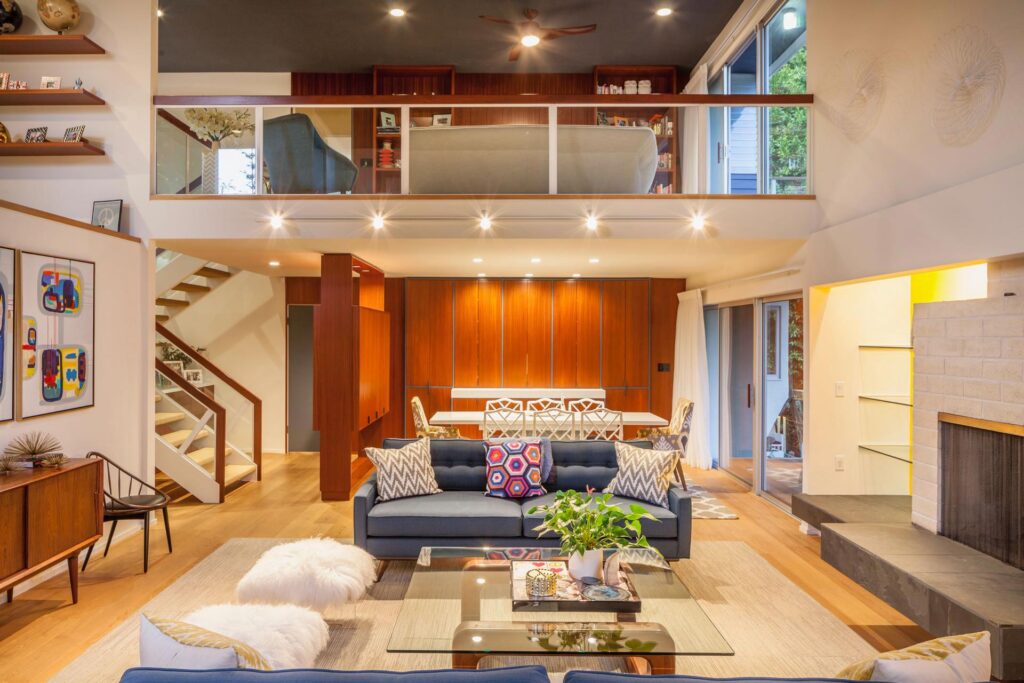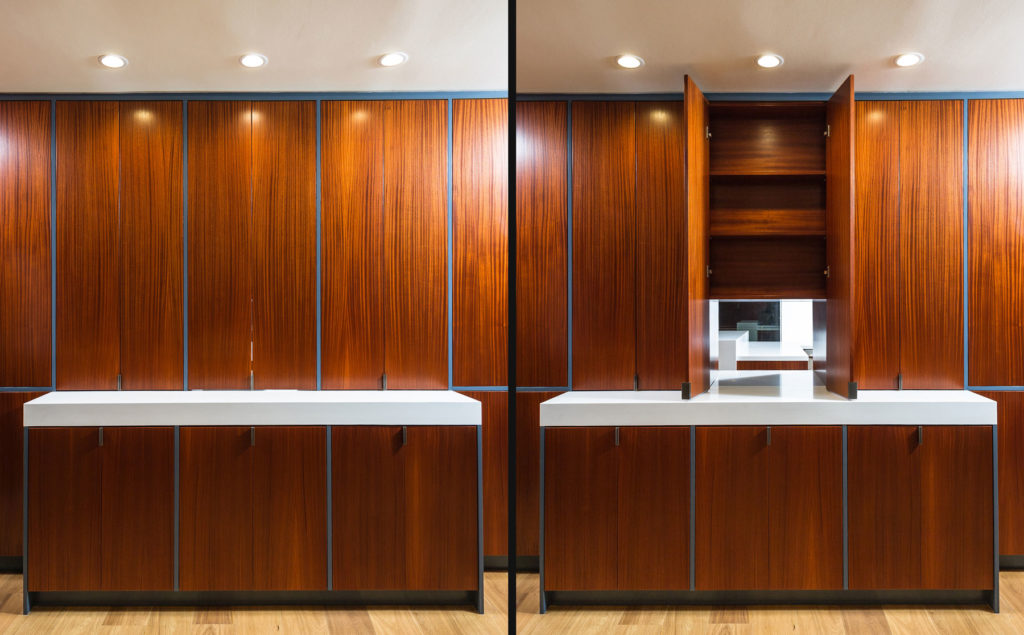When you are a design-build firm and you are hired to do a major renovation of a historically significant home, it’s a bit like being a detective. The owners of these homes are generally interested in preserving the character and style of the home–all the things they love about it–and getting rid of all the things they hate. You’ve got to work with them to figure out these important details and to also discover what the the original architect’s intentions were.
Working on the Kearsarge Residence project was no different. You may recall that we posted last year that the Kearsarge home was for sale. The new owners were so impressed with the level of care and the quality of work our firm had done that they reached out to us to make some additional customizations to suite their family and needs. As we are now finishing up these renovations (pictures and details soon to be posted here), we were reflecting on some of our original inspirations the first time we visited the house.

After decades of wear, much of the home felt tired and dull. There was also a sense of imbalance in some of the rooms including a small bedroom on the front side and the open two story main living area. One day, before removing some old cabinetry below the stairs, we discovered a copy of the original hand-made drawings by the home’s architect, Haralamb Georgescu. This provided a wealth of insight, including the fact that the bedroom was meant to be an office and was intended to be open to the living room space below and the loft level above. The office had always seemed odd, too narrow and the ceiling height was too high, and these drawing helped us to discover the original intent of the space. When we opened up the wall, the light that bounced into the space from three sides of the house, as well as the skylights along each side of the fireplace was truly magical.
As the history of the house began to further reveal itself to us during demolition, we discovered that the ceiling of the main space had originally been painted a rich blue-grey tone. The ceiling had subsequently been painted over with a simply flat white. We determined that Georgescu had extended this colored ceiling from the office, loft, and living room to the outdoor soffits to create an indoor-outdoor effect when standing in the space.

The original cabinetry in the home was tiger stripe mahogany. Much of the finish was faded and in some cases the cabinets had been painted over. We painstakingly removed a massive, double-sided set of cabinets that was between the kitchen and dining area to prepare it for restoration. (A clever peak-a-boo opening allowed items to be sent between the two rooms and then closed to provide a beautiful focal point and to create a more formal setting.) We restored the cabinetry and then used this as a jumping off point to add additional cabinetry with more modern detailing in other parts of the home. To underscore the indoor-outdoor connections in the space, vast expanses of outdoor decking were replaced with ipe wood that was stained the same tone as the mahogany cabinetry.
White oak had been used on the stair treads, but the rest of the home was a mix of flooring, including purple carpet, checkered linoleum, and other species of wood floors. We decided to use white oak as the flooring throughout the home. Not only is it beautiful, but using the same material for all of the flooring unified the spaces (much as the ceiling color did). Whether this was an oversight in the the original design or a limit in budget or availability of materials, I’m not sure we’ll ever know.


Originally designed by a mid-century modernist architect, the goal of this project wasn’t to just renovate the home, but to create a home that functioned for today’s lifestyle and showcased the original design. We carefully restored the home where possible to the original 1968 design, and with modern building techniques and the availability of new materials, we were able to elevate the original design. Our ability as a design-build firm to adapt to new discoveries while maintaining a commitment to the high level of craftsmanship that the home deserved, became indispensable in this historic restoration.





